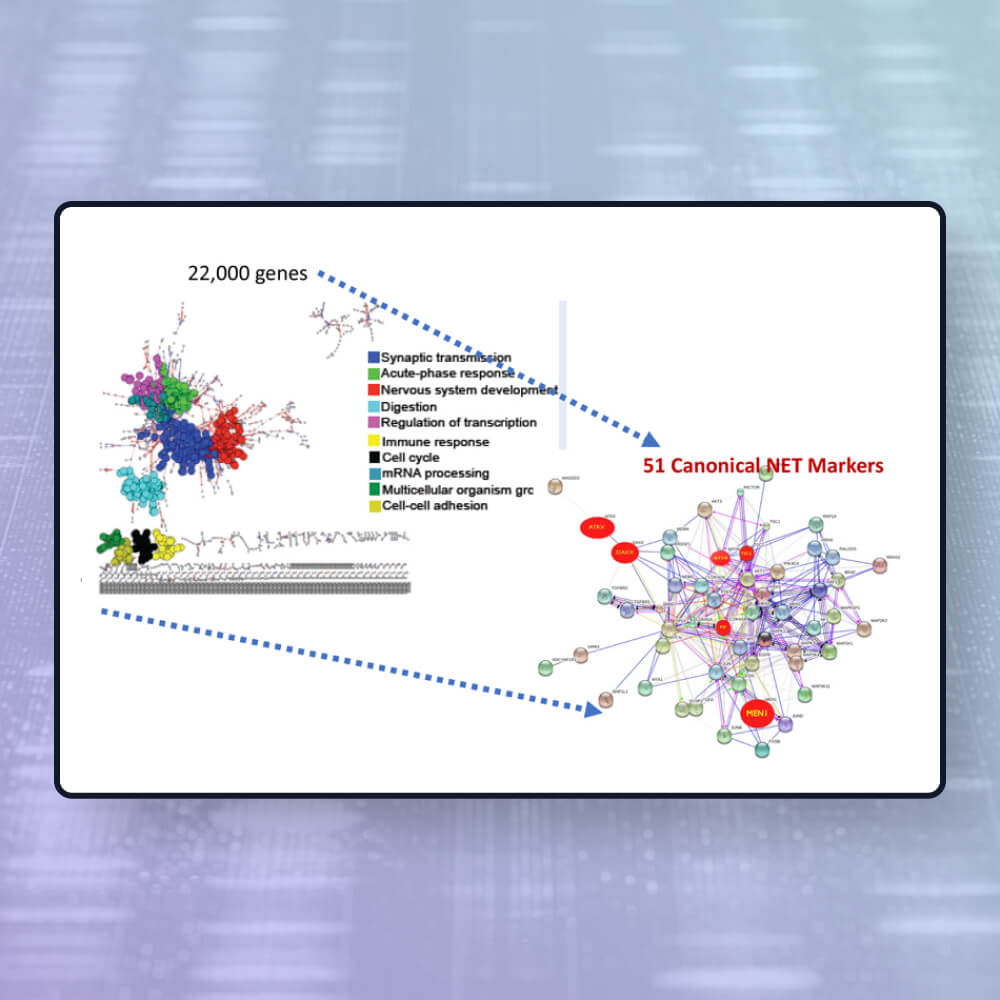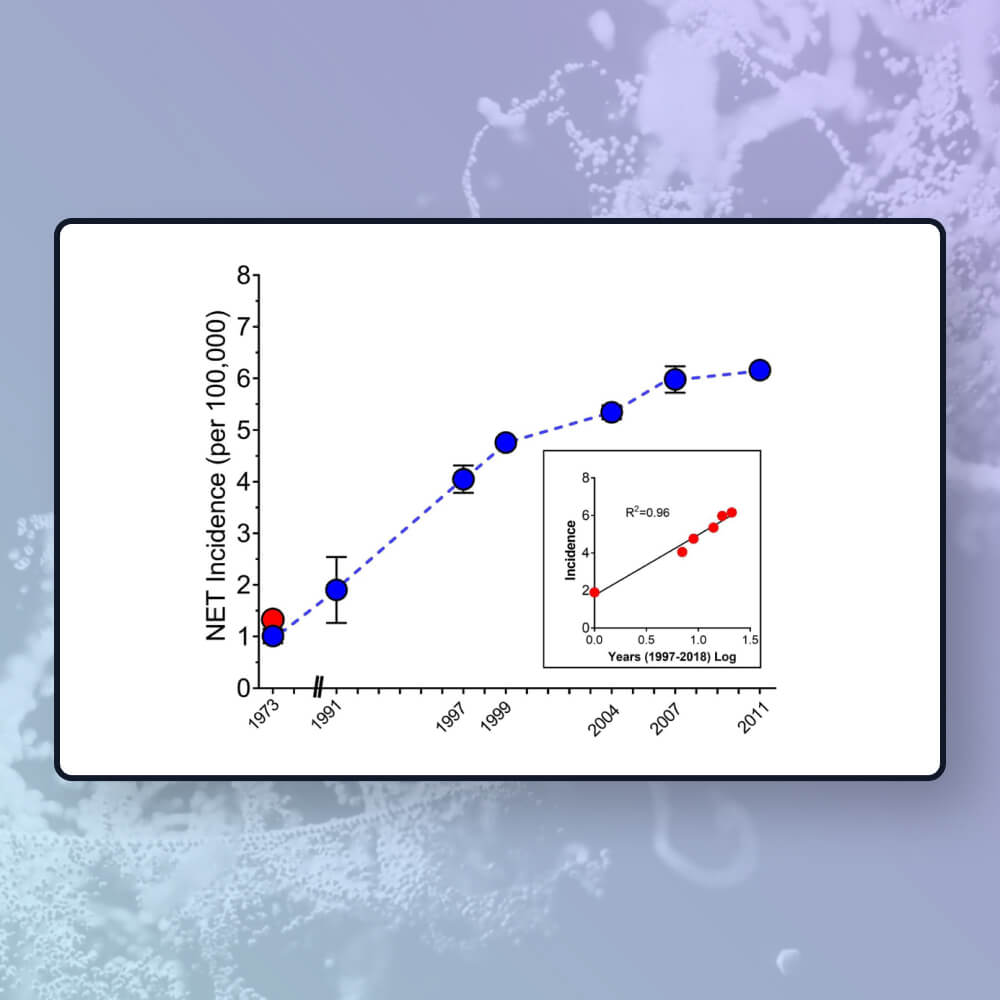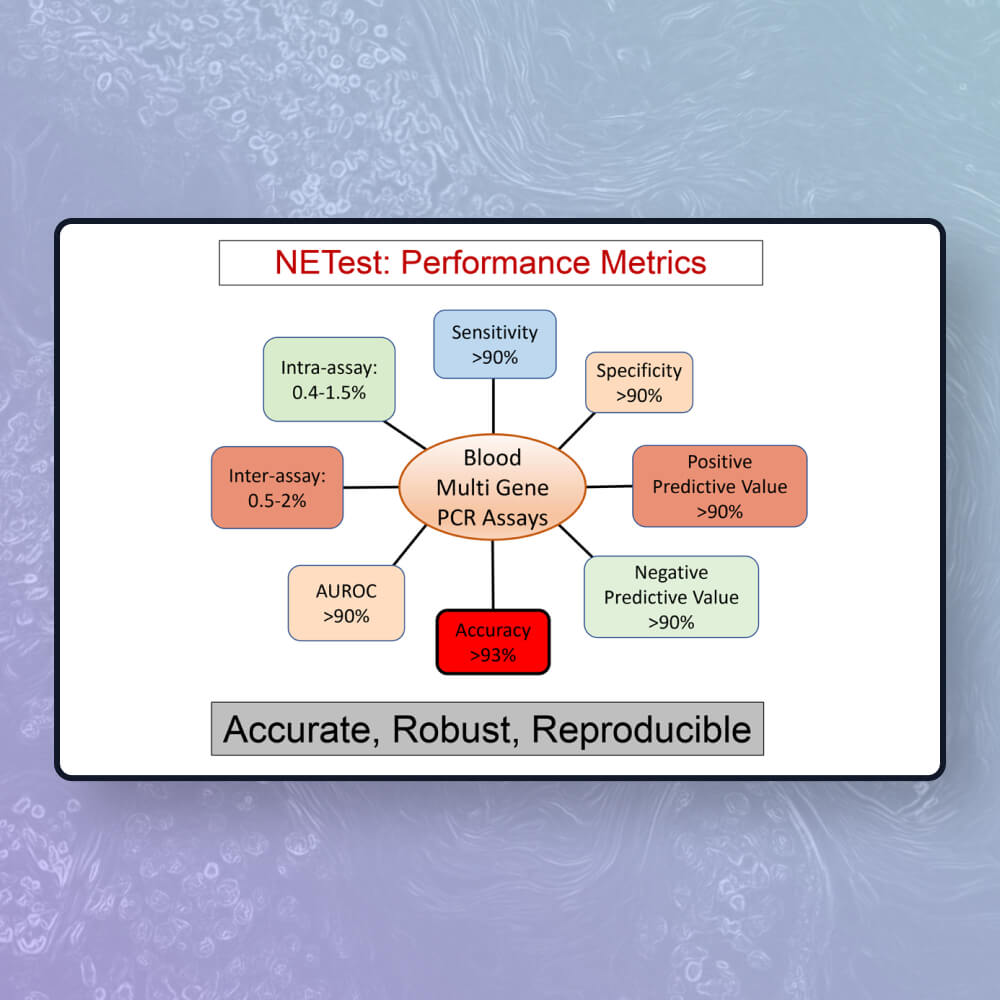Genomic profiling
Gastroenteropancreatic neuroendocrine neoplasms.
Genomic profiling
A key unmet need is the availability of a blood test for early diagnosis or surveillance.


How common are NETs?
Increased incidence of carcinoid tumors, US population 1973–2005. Overall increase recorded for all primary sites during this period. Data from SEER (NCI).
NETs
The Surveillance Epidemiology and End Results (SEER) database (1973-2006), contains 48,195 NENs. These tumours (also called NETs or “carcinoids”) comprise 0.66% of all malignancies.
The incidence is increasing at a rate of 3-10% per year depending on the subtype.
The frequency (1.22%) of NENs in a large autopsy series also indicates that they have previously been under-diagnosed.
The most frequent location is the gastrointestinal tract (66%) with the second most common location in the bronchopulmary system (25%).
Are there good biomarkers?
Yes. Although Chromogranin A (CgA) is the most widely used biomarker, it has poor performance metrics and is not considered useful. In contrast, the NETest is the only biomarker with extensive utility.


Individual markers
Individual markers like urinary 5-HIAA or plasma 5-HT are cumbersome, insensitive and difficult to quantify while the most commonly used, chromogranin A levels, varies between laboratories and can be non-specifically elevated. There is no “universal”, accepted marker.
A key unmet need was the availability of a blood test for early diagnosis or surveillance. This can now be provided by the NETest.
Customers are thrilled with the results we have achieved.
